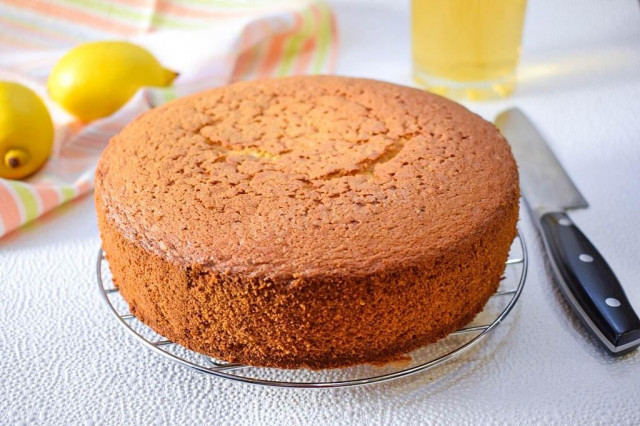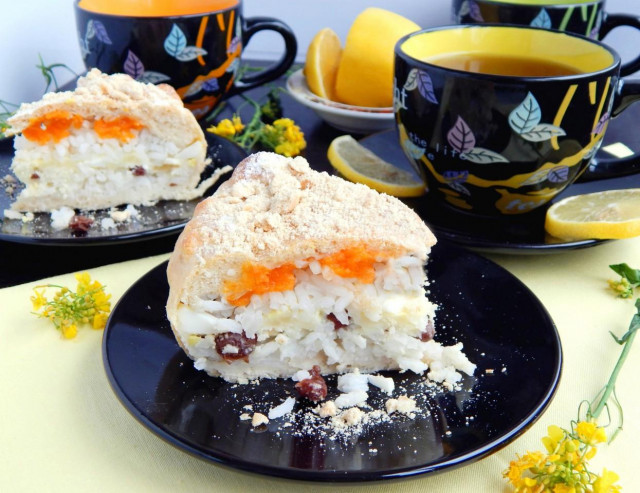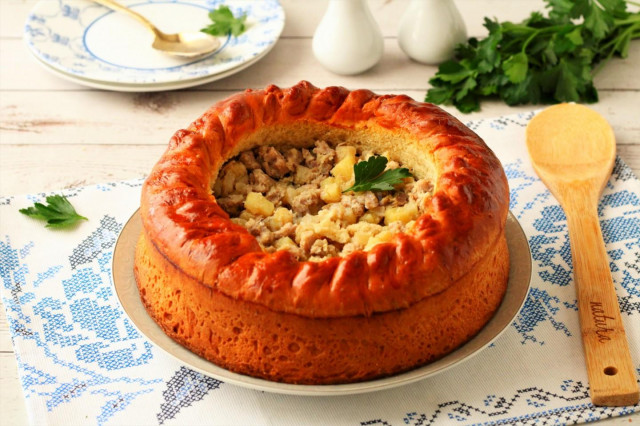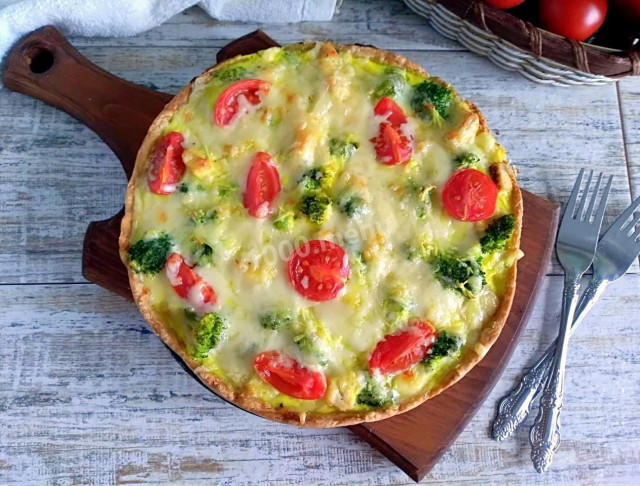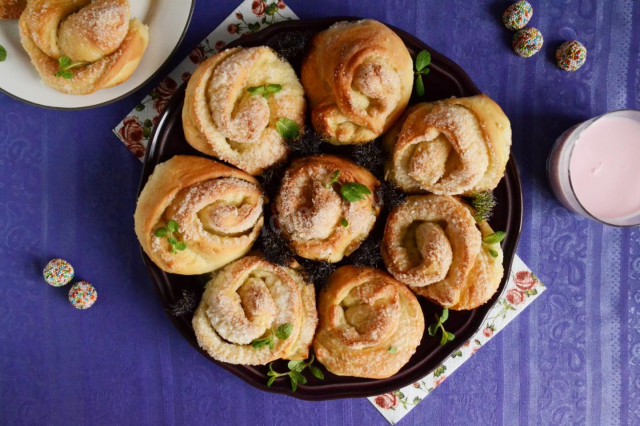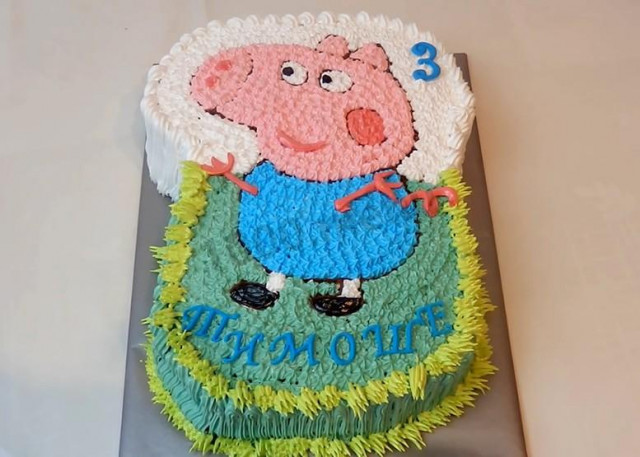Composition / ingredients
Step-by-step cooking
Step 1:
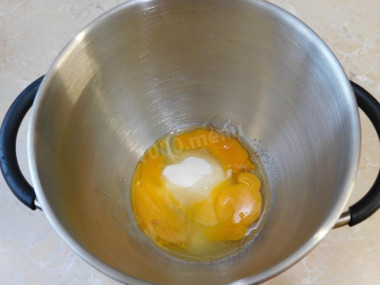
How to make lemon sponge cake? Take a deep bowl in which you will cook the dough. Break the eggs into it and add sugar. Turn on the highest power of the mixer and beat the eggs for a few minutes so that the mass increases in volume and becomes light and lush. Be sure to wash the eggs before use, as even the seemingly clean shell may contain harmful bacteria. It is best to use food detergents and a brush.
Step 2:
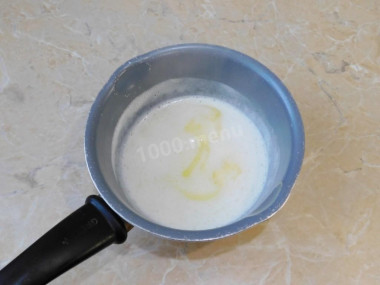
In parallel, while the eggs are being beaten, combine the milk and butter in a saucepan and put on a small fire. Bring to a boil and, stirring, wait until the butter has completely melted.
Step 3:
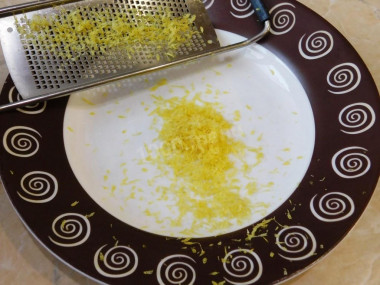
Rinse the lemon well with a brush. Remove the zest from it with the smallest grater. Try to remove only the yellow part, without affecting the white one. The white part of citrus fruits is bitter.
Step 4:
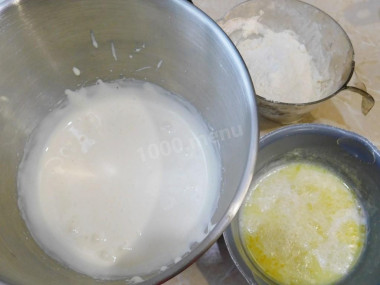
Add hot milk mass and sifted flour with soda to the beaten eggs in 2-3 doses manually, using a whisk. To preserve the splendor of the dough, stir it gently, not actively. It is important to sift the flour to saturate it with oxygen. Then the biscuit will turn out to be airy and will rise well when baking.
Step 5:
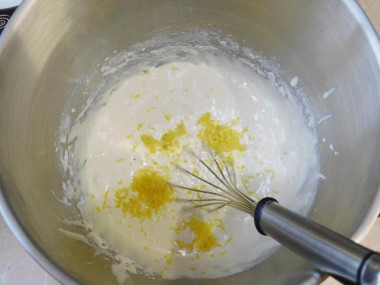
Add lemon zest to the dough, mix.
Step 6:
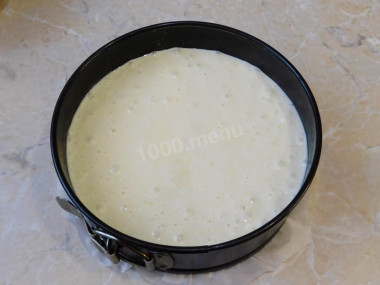
Pour the dough into a detachable baking dish (I have a diameter of 18cm) and put it in the oven, preheated to 180 degrees, for 40-50 minutes. For the convenience of removing the biscuit from the mold, the bottom can be covered with baking paper and clamped with the sides of the mold. When the top layer of the biscuit is slightly browned, check it for readiness: pierce it with a wooden skewer in several places, if the skewer comes out dry, then the mold can be taken out of the oven.
Step 7:
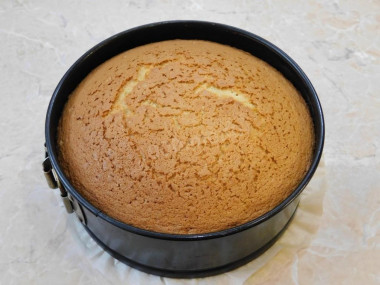
Cool the finished biscuit and remove it from the mold. Go around the edges with a sharp knife and remove the sides. In order to make it convenient to work with it, put the cooled biscuit in a bag and put it in the refrigerator for at least 4 hours. Use a sponge cake to assemble a cake or just for tea, as a pie. Bon appetit!
If you cook a cake on such a sponge cake, then you can also prepare lemon impregnation for it. Squeeze the juice from the same lemon, add a little water and sugar. Warm up the mixture a little so that the sugar dissolves and cool. You can soak biscuits.
According to the same principle, you can prepare an orange sponge cake with orange impregnation.
Citrus cakes are great for Christmas cakes. Soft, gentle, airy — it will not leave anyone indifferent.
Be prepared for the fact that flour may need more or less than indicated in the recipe. Focus not on the amount of flour, but on the desired consistency of the dough. To avoid mistakes, read about flour and its properties!
All the secrets of making a tall, beautiful, lush sponge cake read the article about the biscuit dough .
Keep in mind that everyone's ovens are different. The temperature and cooking time may differ from those specified in the recipe. To make any baked dish successful, use useful information about the features of ovens !
Caloric content of the products possible in the composition of the dish
- Whole cow's milk - 68 kcal/100g
- Milk 3.5% fat content - 64 kcal/100g
- Milk 3.2% fat content - 60 kcal/100g
- Milk 1.5% fat content - 47 kcal/100g
- Concentrated milk 7.5% fat content - 140 kcal/100g
- Milk 2.5% fat content - 54 kcal/100g
- Chicken egg - 157 kcal/100g
- Egg white - 45 kcal/100g
- Egg powder - 542 kcal/100g
- Egg yolk - 352 kcal/100g
- Ostrich egg - 118 kcal/100g
- Whole durum wheat flour fortified - 333 kcal/100g
- Whole durum wheat flour, universal - 364 kcal/100g
- Flour krupchatka - 348 kcal/100g
- Flour - 325 kcal/100g
- Granulated sugar - 398 kcal/100g
- Sugar - 398 kcal/100g
- Butter 82% - 734 kcal/100g
- Amateur unsalted butter - 709 kcal/100g
- Unsalted peasant butter - 661 kcal/100g
- Peasant salted butter - 652 kcal/100g
- Melted butter - 869 kcal/100g
- Baking soda - 0 kcal/100g
- Lemon zest - 47 kcal/100g

